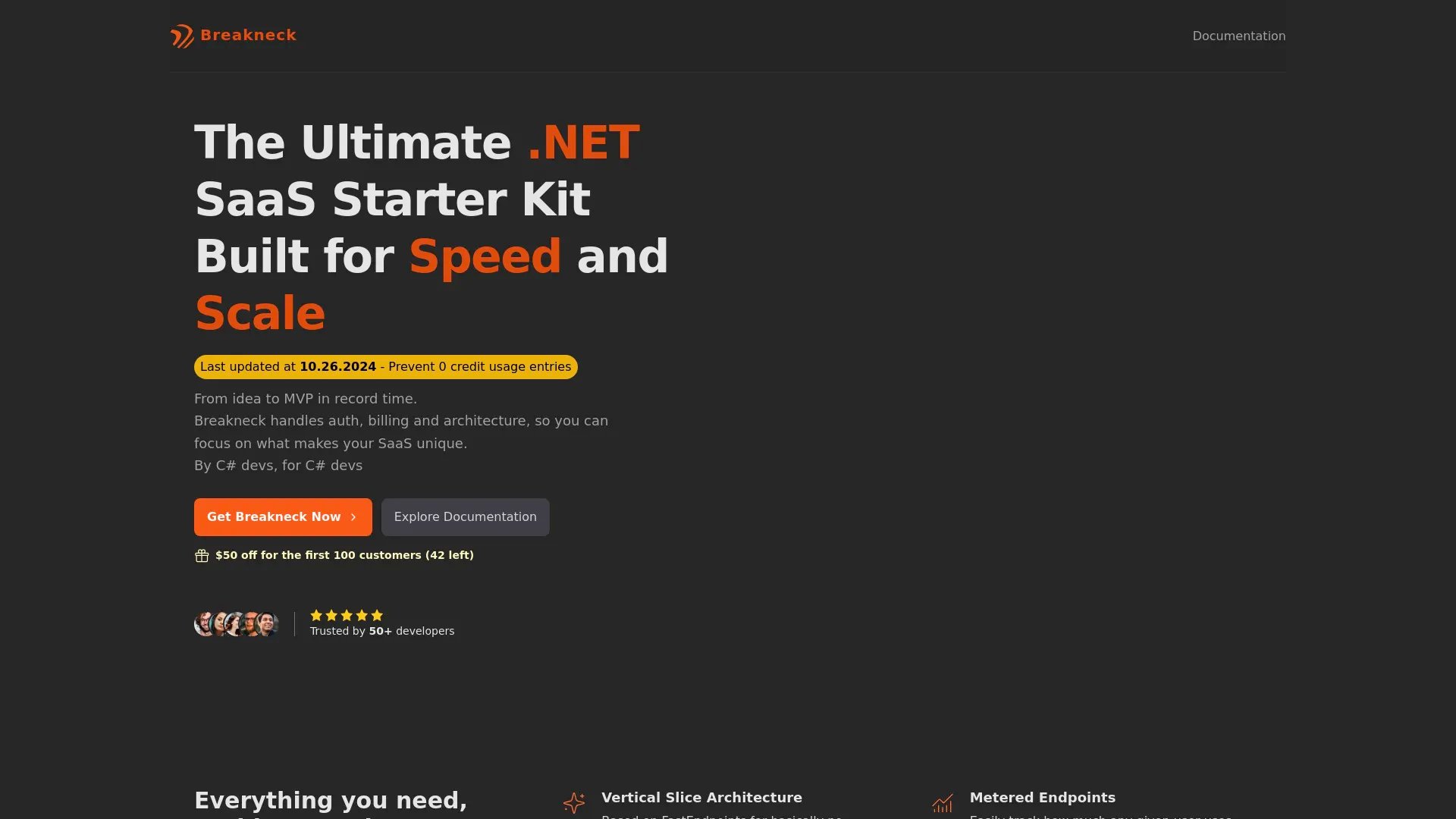
Breakneck
The Ultimate .NET SaaS Starter Kit Built for Speed and Scale
Features:
Explore 1 boilerplate in this collection. Find the perfect starting point for your next project.

The Ultimate .NET SaaS Starter Kit Built for Speed and Scale
Features:
EF Core provides a powerful data storage solution with specific transaction models, indexing strategies, and query capabilities suited for SaaS applications. Our EF Core boilerplates implement database-native features—from ACID transactions to advanced indexing—with schemas optimized for EF Core's query engine and scaling characteristics.
EF Core boilerplates are designed around the database's data modeling approach and transaction semantics. They leverage EF Core-specific features like JSONB columns, full-text search, aggregation pipelines, or partition keys depending on the database type. The schema design follows EF Core's best practices for normalization (SQL) or document structure (NoSQL), with strategic indexes on query-heavy columns. Migration systems use EF Core-native tools for version-controlled schema evolution.
Browse our collection of 1 EF Core boilerplate to find the perfect starting point for your next SaaS project. Each boilerplate has been carefully reviewed to ensure quality, security, and production-readiness.
EF Core boilerplates utilize the database's native capabilities including its transaction model (ACID for SQL, eventual consistency for NoSQL), indexing strategies (B-tree, GiST, full-text search), and advanced features like JSON columns, array types, window functions, or document queries. The schema design takes advantage of EF Core's strengths—whether that's PostgreSQL's JSONB, MySQL's full-text search, MongoDB's aggregation pipeline, or Redis's data structures.
EF Core boilerplates include production-tested schemas for multi-tenancy, user management, subscriptions, and billing. The design follows EF Core's best practices for data modeling—whether that's normalized tables with foreign keys (SQL), embedded documents vs. references (MongoDB), or partition key strategies (DynamoDB). Schemas include proper constraints, default values, and relationship management optimized for EF Core's query engine.
EF Core boilerplates implement database-specific query optimizations including strategic indexing on frequently queried columns, query plan analysis, proper use of EF Core's query features (prepared statements, query builders, aggregations), and N+1 query prevention. Connection pooling is configured for EF Core's optimal settings, and caching layers are positioned to reduce database load while maintaining data consistency.
EF Core boilerplates are structured for horizontal and vertical scaling using the database's native scaling features. This includes read replicas, sharding strategies (if applicable), connection pool sizing, and query optimization for distributed systems. The architecture supports EF Core's scaling patterns—whether that's PostgreSQL's logical replication, MongoDB's sharding, or DynamoDB's automatic partitioning.
EF Core boilerplates include migration systems using database-specific tools (Prisma migrations, Django migrations, Flyway, Liquibase, or native tools). They follow EF Core's best practices for zero-downtime deployments, backward-compatible schema changes, and data migrations. Backup strategies leverage EF Core's native backup features (pg_dump, mysqldump, mongodump) with automated scheduling and point-in-time recovery configurations.